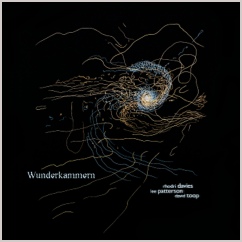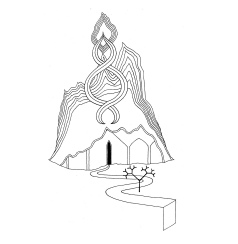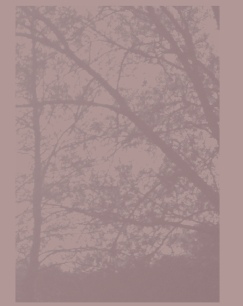Another Timbre TimHarrisonbre
The following review by Michael Rosenstein appeared in the US magazine Signal to Noise. It covers the three improvised discs in the ‘Silence and After 1’ series from December 2010.
“Over the last few years, Simon Reynell been putting out thoughtfully grouped sets of releases on his Another Timbre label, delving in to young improvisers coming out the weekly Workshop Series hosted by Eddie Prevost, settings for piano and guitar in improvised music, and most recently, duos with brass instruments. In each of these series, Reynell has used the themes to bring out common threads as well as the multi-dimensional nuances of the musicians he is covering. For this latest go-round, Reynell has headed in to the conceptual territory of “Silence and after,” using the fiftieth anniversary of John Cage’s Silence as the jumping off point for five CDs which explore the intersections of sound and silence, compositional frameworks and improvisational indeterminacy. There’s also, of course, the specter of “reductionsim” and “the new silence;” terms which have now been with us for almost a decade. Under consideration here are three of the releases from the series.
Wunderkammern, a German term loosely translated as “wonder room,” were an early form
of what would become cabinets of curiosities in the Renaissance, taxonomical collections
of objects and specimens gathered together for contemplation. Listening to this set
of six collectively improvised pieces, one can imagine why Rhodri Davies, Lee Paterson,
and David Toop were drawn to the term.
The variegated textures and timbres that emanate
from Davies’ harp, electronics, and preparations; Patterson’s amplified mechanical
devices and field recordings, and Toop’s laptop, steel guitar, flutes, and percussion,
gather in shifting layers and subtle juxtapositions, eschewing arc or conversational
interplay. What comes through is the contrast of electronic and acoustic sound, but
also the contrast of mechanical rattle and string resonance from harp and guitar
or the breathy quaver of flute, the natural decay of acoustic instruments (both amplified
and unamplified) and the on-off quality of the electronics, and activity of physical
gesture and the sputter and buzz of electronics. There is a distinctive spatial element
to the recording as sounds and textures accrue, accentuated even further by the sonic
ground Patterson introduces with field recordings. Just as striking is the way that
the three think about time and duration; slowly unfolding from the stratification
of extended waves with spatters of more gestural elements. Two of the pieces find
endings at just over four minutes, three at around 10 minutes, and the immersive
“In the dead body of a calf are generated bees” extends for 21 minutes; but in all
cases, Davies, Patterson, and Toop extend the improvisations through to conclusive
resolution.
On their Web site, the trio Looper (Nikos Veliotis on cello and video, Ingar Zach on percussion, and the increasingly ubiquitous Martin Küchen on reeds) describes their work as follows: “Looper’s unique combination of floating sounds and multi-layered abstract visuals provides the spectator with a suspended intermedia environment to sink in, dislocating him from the casual perception of time and space.” They’ve previously documented the multi-media aspect of their work on a DVD in collaboration with John Tilbury, but this time out, the music stands on its own. Like the trio above, the three work with the construct of amassing textures and densities of sound, but here, the threads are far more enmeshed; utilizing extended drones, pulse, harmonics, and the interaction of overtones to create engulfing soundscapes. The 30-minute “Grand Redshift” starts with a coursing hum and gradually mounts in density, adding tolling gongs, hissing gusts of reeds, to the quavering overtone drones driven by a palpable oscillating thrum of low-end growls, groans, and muted roars. The densities are thicker and the details, darker, with individual lines of activity much less overt. Like Wunderkammern the notion of unfolding time is central to the music of Veliotis, Zach, and Küchen, but here, the propulsive undercurrents of pulse and looping patterns provide a connective thread that the lush soundscapes ride along. The two other pieces are shorter with “Hazy Dawn” driven by the beating shimmer of tam tam and cymbals and “Near Eternity” fluttering back and forth between signal, drone, and beating pulse with wafts of radio static and chatter and reed hisses woven in. Listening on speakers is key here as the sound envelops the room with the nuances of this trio’s soundscapes.
The trio of Chris Cogburn, Bonnie Jones, and Bhob Rainey provide a perfect complement to the other two recordings. The two live sets that make up the recording were captured live at the 2010 No Idea Festival in Austin and Marfa, Texas. There’s a markedly transparent sound to this trio with silence and ambient sound a distinguishing element to the unfolding improvisations. The character of each of the musicians makes a specific and discrete mark on the music; Rainey’s fricative overtones and sibilant use of breath, Jones’ burred and cracked circuits, and Cogburn’s gesturally abraded percussion. Their music is a tightrope display of careful listening as the three explore a dynamic sense of elastic balance. Over the course of these two sets, the trio evolves a potent collective vocabulary. Gesture plays a much stronger role here than in the previous two releases but each of the members eschews the use of conversational activity, instead, pursuing vectors of countervailing lines that coalesce around velocity and dynamics while creating a mutable tension. The three can drop down to near silence with wisps of detail or erupt in boisterous crescendos, but they emerge in a natural progression rather than any forced sense of formal arc. Rainey is fairly well documented, but Jones, and particularly Cogburn, have not recorded as frequently; this is a particularly welcome release and one I’ve been going back to often.”
Michael Rosenstein


